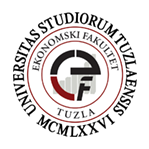BUILDING COMPETITIVE ADVANTAGE OF THE COMPANY BASED ON CHANGING ORGANIZATIONAL CULTURE
Abstract
In the theory and practice of the organization and management in the developed countries, the organizational culture becomes more and more important source of discreet, obscure but powerful and long sustainable competitive advantage, if it is developed as especially effective and established to strengthen its content which enables value creation in accordance with the selected way of competing. In this sense, the need for developing suitable culture content i.e. maintaining organizational culture, is gaining in importance. The competitive value framework and methodology for diagnosing and changing organizational culture developed by Cameron K.S and Quinn R.E (1999), who provided a theoretical background for understanding, valid tools for diagnosing and systematic strategy for changing organizational culture, emerged as a useful tool which can help in establishing organizational culture and its adjustment to a selected way of competing. Our study conducted for the first time in this region using these instruments, speaks in favor of the above mentioned observations. Narrowing down a wider content of these studies, we present a comparative analysis of organizational culture that we conducted in two up-and-coming companies in domestic shipping industry –furniture industry. This analysis provides important data and secures suitable (transparent) background for guidelines and activities in further development and improvement (change) of culture which these companies maintain, according to their selected ways of competing.
Downloads
Downloads
Published
How to Cite
Issue
Section
License
Copyright (c) 2024 Economic Review: Journal of Economics and Business

This work is licensed under a Creative Commons Attribution-NonCommercial-NoDerivatives 4.0 International License.




